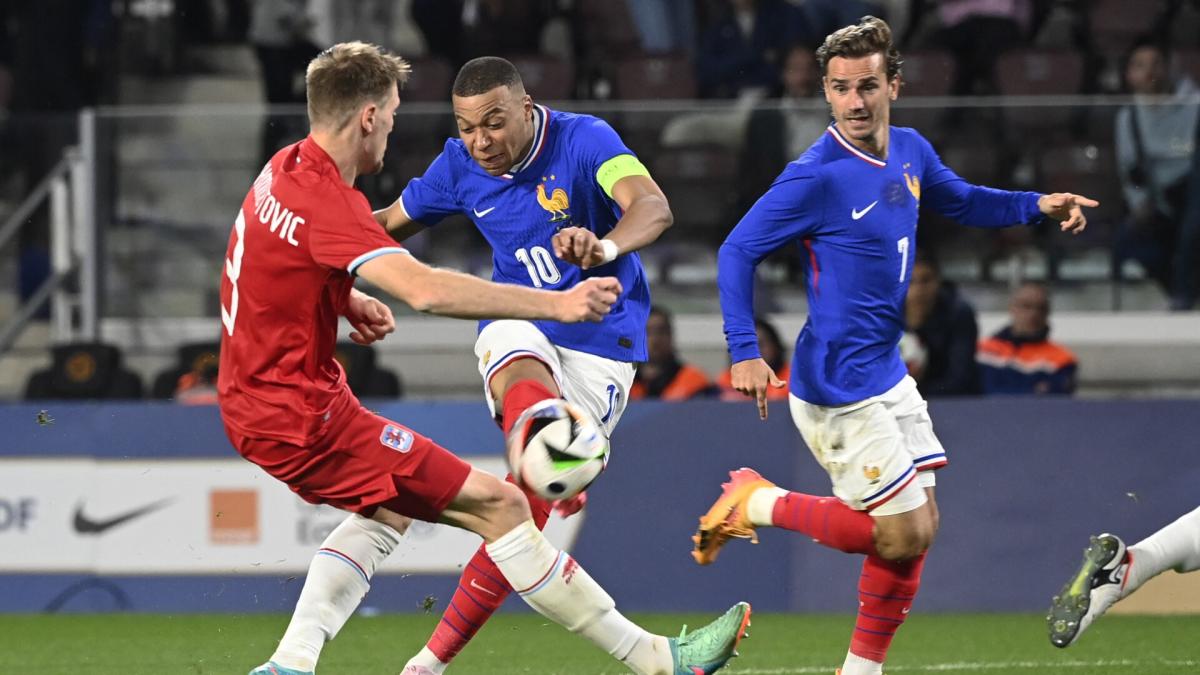Historical Context and Relations

France vs austria – France and Austria have a long and complex history, marked by both conflict and cooperation. The two nations have been rivals for centuries, fighting numerous wars over territory and influence. However, they have also been allies at times, most notably during the Napoleonic Wars.
The conflict between France and Austria reverberated across Europe, but it also had a profound impact on the life of Fabrizio Laurenti, an Italian artist who found himself caught in the crossfire. Fabrizio Laurenti was a master of the grotesque, and his work often reflected the chaos and violence of the times.
The war between France and Austria provided him with ample inspiration, and his paintings depicted the horrors of battle and the suffering of the innocent.
Historical Conflicts
The first major conflict between France and Austria was the Thirty Years’ War (1618-1648). This war was a religious conflict between Protestants and Catholics, and France fought on the side of the Protestants. The war ended with the Peace of Westphalia, which gave France control of Alsace and Lorraine.
The rivalry between France and Austria has been a defining feature of European history for centuries. From the Napoleonic Wars to the Franco-Prussian War, these two nations have clashed repeatedly on the battlefield. For more information on the history of this rivalry, see austria v france.
Despite their long history of conflict, France and Austria have also enjoyed periods of cooperation and friendship. Today, the two countries are close allies within the European Union.
The next major conflict between France and Austria was the War of the Spanish Succession (1701-1714). This war was fought over the succession to the Spanish throne, and France fought on the side of Philip V of Spain. The war ended with the Treaty of Utrecht, which gave France control of parts of the Spanish Netherlands and Italy.
The rivalry between France and Austria, once a clash of empires, has echoed through the centuries. Like the iconic Brooklyn Bridge in the epic television series Game of Thrones , it has witnessed countless battles and intrigues. Yet, amidst the conflicts, a glimmer of resilience remains, much like the bridge’s enduring presence over the East River.
The third major conflict between France and Austria was the Napoleonic Wars (1803-1815). This war was fought between France and a coalition of European powers, including Austria. France was victorious in most of the early battles of the war, but was eventually defeated by the coalition forces. The war ended with the Congress of Vienna, which restored the pre-war borders of Europe.
Historical Alliances
Despite their many conflicts, France and Austria have also been allies at times. The most notable example of this was during the Napoleonic Wars, when Austria joined forces with France against Russia and Prussia. Austria also supported France during the Franco-Prussian War (1870-1871).
Cultural and Diplomatic Ties
France and Austria have a shared cultural heritage, and there have been many cultural exchanges between the two countries over the centuries. French culture has had a major influence on Austrian culture, and many Austrian artists, musicians, and writers have been inspired by French culture. The two countries also have close diplomatic ties, and they cooperate on a wide range of issues.
Political and Economic Comparison: France Vs Austria
France and Austria share a long and complex history, which has shaped their political and economic systems. Both countries are members of the European Union, but they have distinct political ideologies and economic structures.
Political Systems
France is a republic with a strong presidential system. The president is elected by popular vote for a five-year term and is the head of state and government. The National Assembly is the lower house of parliament, and the Senate is the upper house. The prime minister is appointed by the president and is responsible for leading the government.
Austria is a parliamentary republic with a federal system. The president is elected by popular vote for a six-year term and is the head of state. The Federal Chancellor is the head of government and is elected by the National Council, the lower house of parliament. The Federal Council is the upper house of parliament.
Economic Structures
France has a mixed economy with a strong public sector. The government plays a significant role in the economy, providing social welfare programs and regulating key industries. France is a member of the eurozone, and the euro is its official currency.
Austria has a social market economy. The government provides social welfare programs and regulates the economy, but the private sector plays a larger role than in France. Austria is a member of the European Union, but it has not adopted the euro. The euro is still the most commonly used currency, but Austria has its own currency, the Austrian schilling.
Current State of Relations
France and Austria have a strong and cooperative relationship. They are both members of the European Union and NATO, and they share a common commitment to democracy and human rights. The two countries also have a long history of cultural and economic exchange.
However, there are some areas of disagreement between the two countries. For example, France has been critical of Austria’s immigration policies, and Austria has been critical of France’s economic policies. Despite these disagreements, the two countries continue to work together on a range of issues, and their relationship remains strong.
Cultural and Social Perspectives

France and Austria, two neighboring nations in Central Europe, share a rich and intertwined cultural heritage. However, they also possess unique social structures and values that have shaped their respective societies.
Language, France vs austria
The most striking difference between the two countries is their language. France is predominantly French-speaking, while Austria’s official language is German. This linguistic divide has influenced everything from literature to cuisine to the way people interact with each other.
Art and Music
Both France and Austria have a long and distinguished history of art and music. French art is known for its elegance and sophistication, while Austrian art is often more whimsical and romantic. Similarly, French music is often characterized by its light and airy melodies, while Austrian music is more robust and dramatic.
Cuisine
French cuisine is renowned for its complexity and refinement, while Austrian cuisine is known for its hearty and flavorful dishes. Both cuisines have been heavily influenced by their respective cultures and histories.
Social Structures
France and Austria have different social structures. France is a more centralized country, with a strong emphasis on equality and individualism. Austria, on the other hand, is a more decentralized country, with a stronger emphasis on tradition and hierarchy.
Values
The values of France and Austria are also different. France is a more secular country, with a strong emphasis on reason and logic. Austria, on the other hand, is a more religious country, with a stronger emphasis on tradition and faith.
Immigration and Multiculturalism
Both France and Austria have experienced significant immigration in recent years. This has led to a more multicultural society in both countries. However, the two countries have different approaches to immigration and multiculturalism. France has a more assimilationist approach, while Austria has a more multiculturalist approach.
In the annals of cycling, the rivalry between France and Austria has been as fierce as the cobblestones of the Tour de France. This year’s edition, set to commence in July, promises to ignite this rivalry once more. The 2023 Tour de France ( https://edwardgooldadamsau.bestiste.com/2024/06/18/2023-tour-de-france/ ) will see the world’s best cyclists battle through the majestic landscapes of France, from the rolling hills of the Vosges to the iconic climbs of the Alps.
As the peloton crosses the border into Austria, the rivalry between these two cycling powerhouses will reach fever pitch, promising an unforgettable spectacle for fans around the globe.
The clash between France and Austria raged on, its brutality echoing the violence of blood and cheese. Like the treacherous act that cost the life of a young prince, the battleground was stained with the blood of countless souls.
Yet, amidst the carnage, the struggle for power and territory continued, its echoes reverberating across the battlefield.
